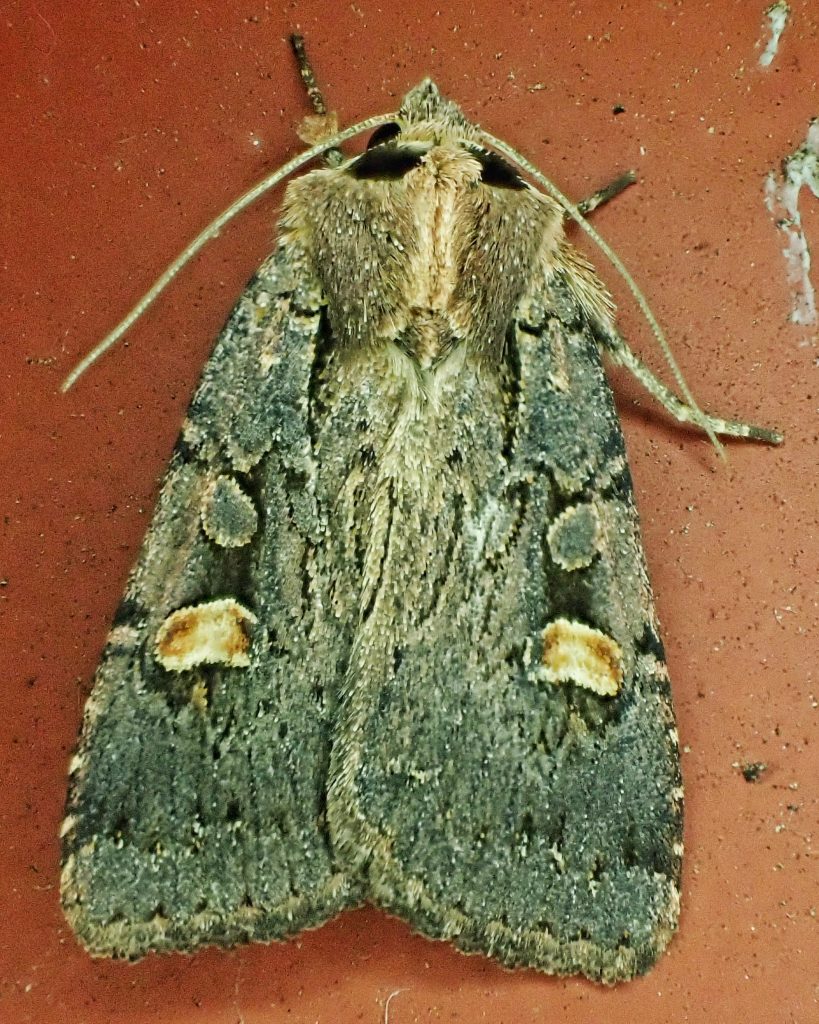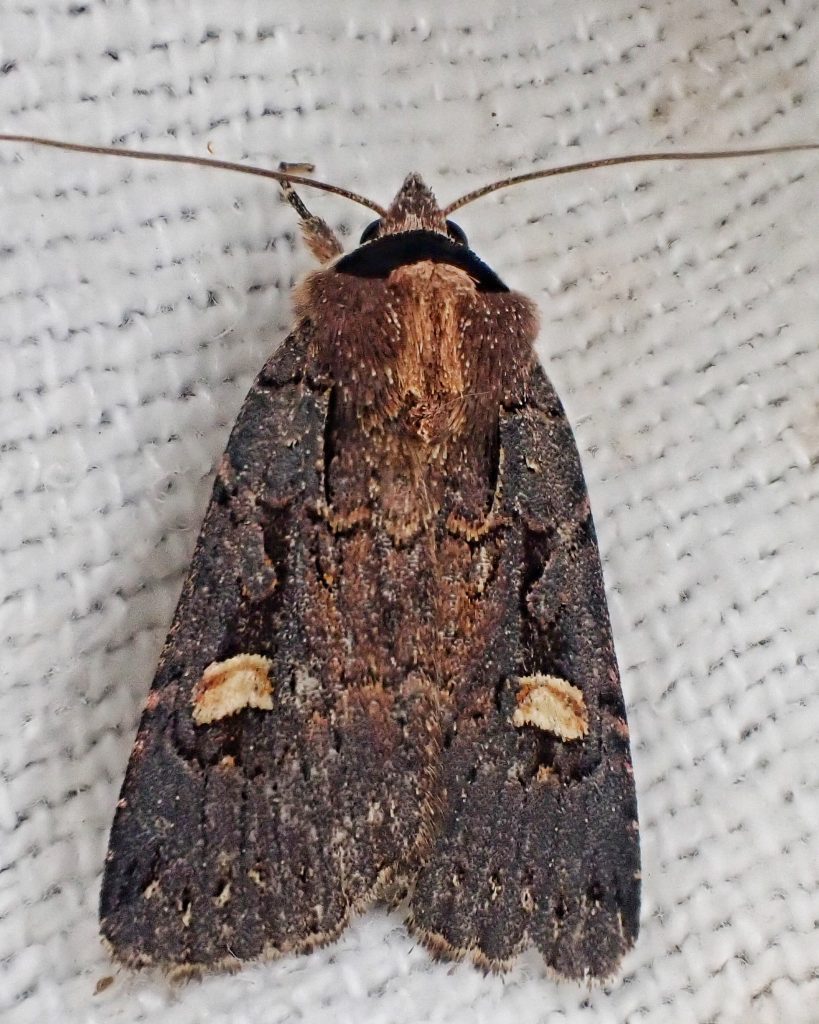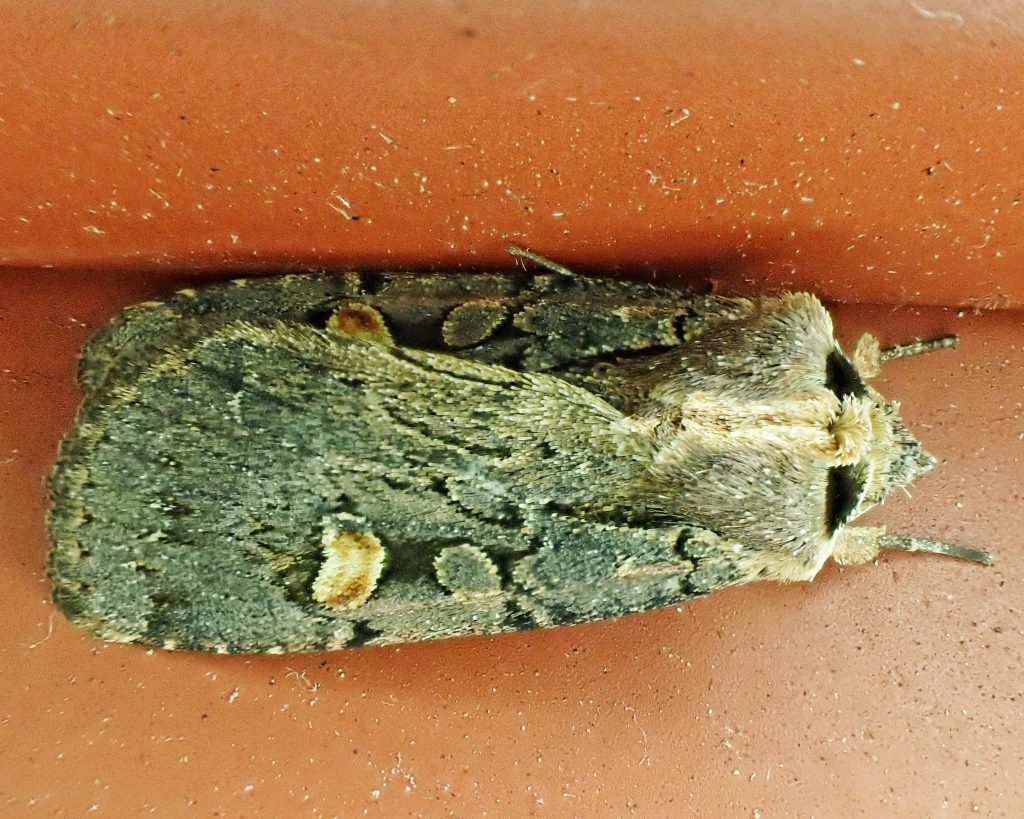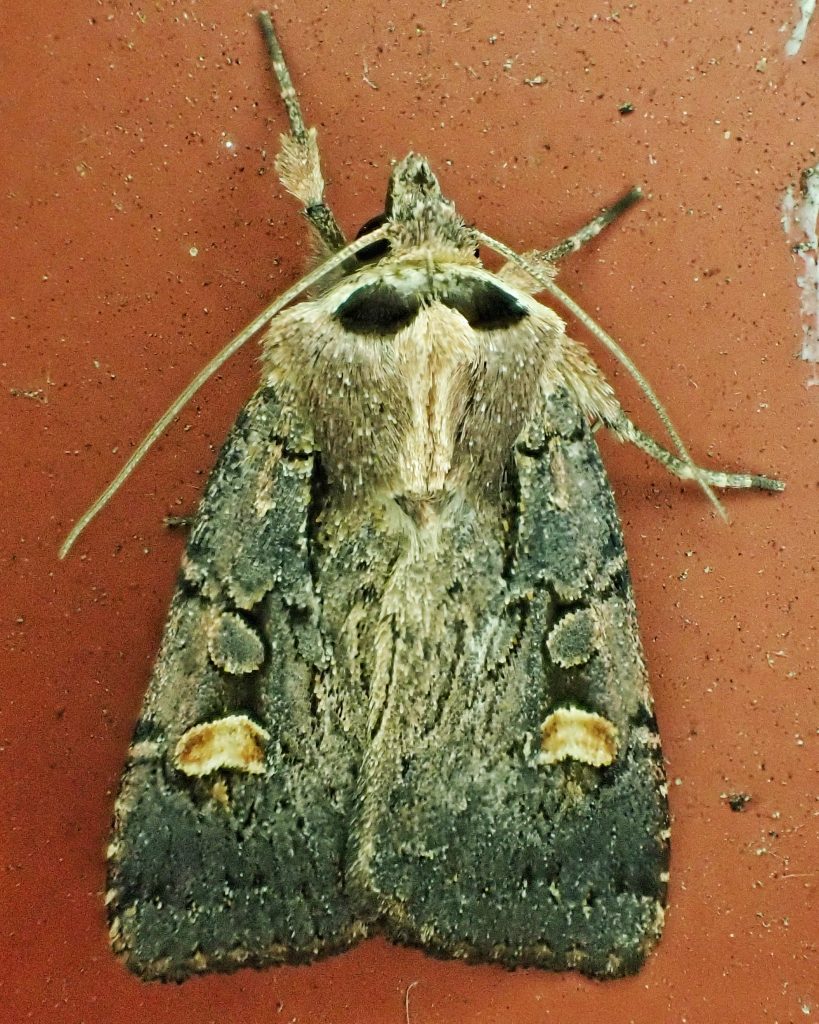
I first found this handsome and distinctive noctuid moth whilst housesitting for my sister-in-law in Portland in mid-August, but I wasn’t in a position to collect specimens for post refrigeration photography. I found another specimen in late August near the confluence of the NF Toutle and Green rivers, but it escaped after a single photo. That is why there are only 5 photos accompanying this profile. Which is too bad, because it deserves multiangled portraits to show off its beauty, although it is not a hard moth to recognize.

Description– “…wingspan presumably similar to A. stellaris (in the 30-40 mm range)…Adult: forewing medium to dark gray, slightly paler in lower medial area; reniform spot whitish to pale yellow with dark shading at top and bottom; black basal dash almost reaches AM line; black strip runs from AM line through orbicular and reniform spots to PM line; AM and PM lines black, wavy, indistinct; subterminal line a series of pale faint dots; hindwing dirty white basally, shading to gray distally, with darker veins and thin discal lunule; fringe pale yellowish with some dark spots at tips of veins; thoracic collar black; top of thorax brownish-gray laterally, with slightly paler middorsal strip.” Species Adelphagrotis indeterminata – Hodges#10991 – BugGuide.Net
Similar species– “The combination of light orange reniform spot, dark brown-gray forewing, and white and black collar are diagnostic of this species. Adelphagrotis stellaris has an orange reniform spot but its forewing is lighter blue-gray and its collare is pale with a thin black line rather than the thick bar of A. indeterminata.” PNW Moths | Adelphagrotis indeterminata

Habitat– “This species is widely distributed in forest habitats. It is most common in oak woodlands and mixed hardwood forests at low elevations west of the Cascades. It is usually uncommon to rare in coastal rainforests, mixed hardwood-conifer forests, spruce-fir forests, and dry, open ponderosa pine forests at middle to high elevations in the Cascades and Rocky Mountain regions.”
Range– Western North America; “Adelphagrotis indeterminata is found throughout much of our region north to southern British Columbia and east to the Idaho Panhandle and adjacent northwestern Montana. It is most common west of the Cascade Range and has not been collected in eastern Oregon south of the Blue Mountains or in most of Idaho.”
Eats– “This species is a generalist feeding on many kinds of hardwoods in such genera as Salix in the Salicaceae, Holodiscus, Rubus, and Spiraea in the Rosaceae, Ceanothus in the Rhamnaceae, and Symphoricarpos in the Caprifoliaceae.”
Eaten by– Presumably a host for parasitoids in Hymenoptera and Diptera, and probably preyed upon by insectivores of all classes, but I can find nothing specific for this species.

Adults active– “This species has been collected from early July to early September in our region. It is nocturnal and comes to lights.”
Life cycle– Since there is only one peak, and it is in late summer, it seems likely that they are univoltine and overwinter as eggs, but I cannot verify this.
Etymology of names– Adelphagrotis is from the Greek word for ‘brother’, and Agrotis, indicating its similarity to that noctuid genus of dart moths. The specific epithet indeterminata seems to be from the Latin word for ‘undetermined’, and was probably Walker’s tongue-in-cheek reference to not knowing what it was, although he does not explain the reference in his original description.

PNW Moths | Adelphagrotis indeterminata
Species Adelphagrotis indeterminata – Hodges#10991 – BugGuide.Net
http://mothphotographersgroup.msstate.edu/species.php?hodges=10991